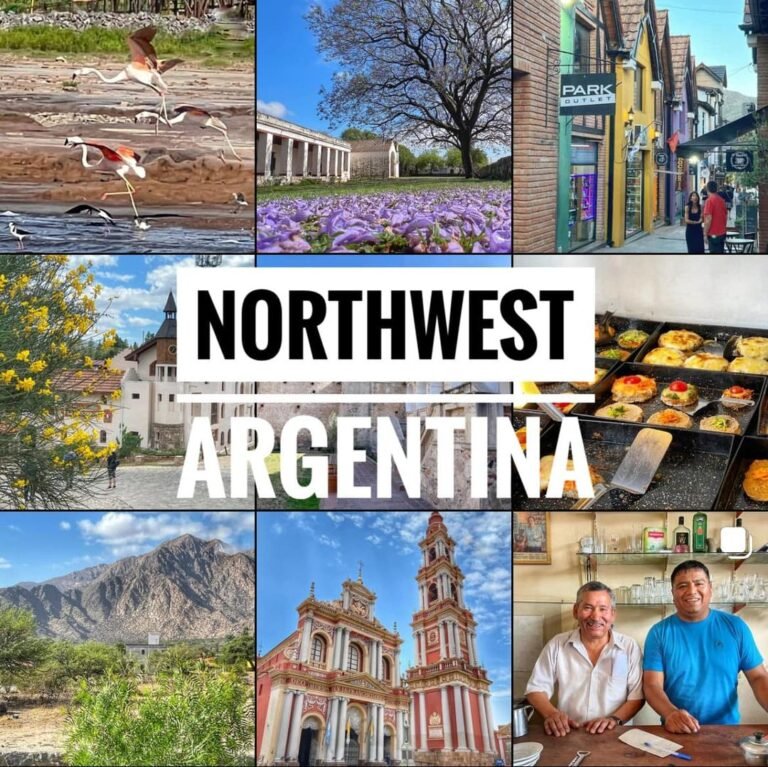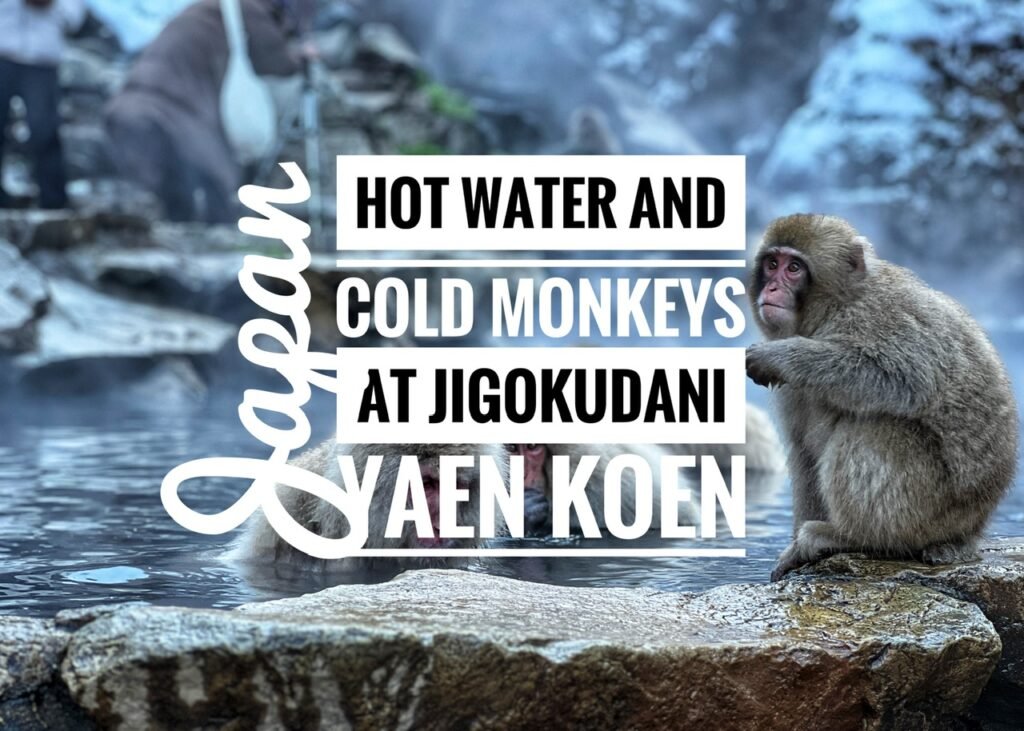
Cold Monkeys
We’ll never forget the day when we first saw a photo of fuzzy little rosy-faced monkeys without tails basking in a pool of piping water. It was years ago in some travel magazine, or book, and quickly gained a well-deserved spot on both of our “60 by 60 Lists.” The Japanese macaque is known as the world’s northernmost non-human wild primate, and like us, they appreciate anything to make them toasty in frigid climates. And what is more remarkable, the Snow Monkey Park (Jigokudani Yaen Koen), open since 1964, in Yamanouchi offers you the chance to see them up close…really close…in their natural habitat. It was simply incredible and a true once-in-a-lifetime experience.

A mama and child snuggle up on the cold morning we arrived. The temperature was just above freezing so we had on every long layer we have.
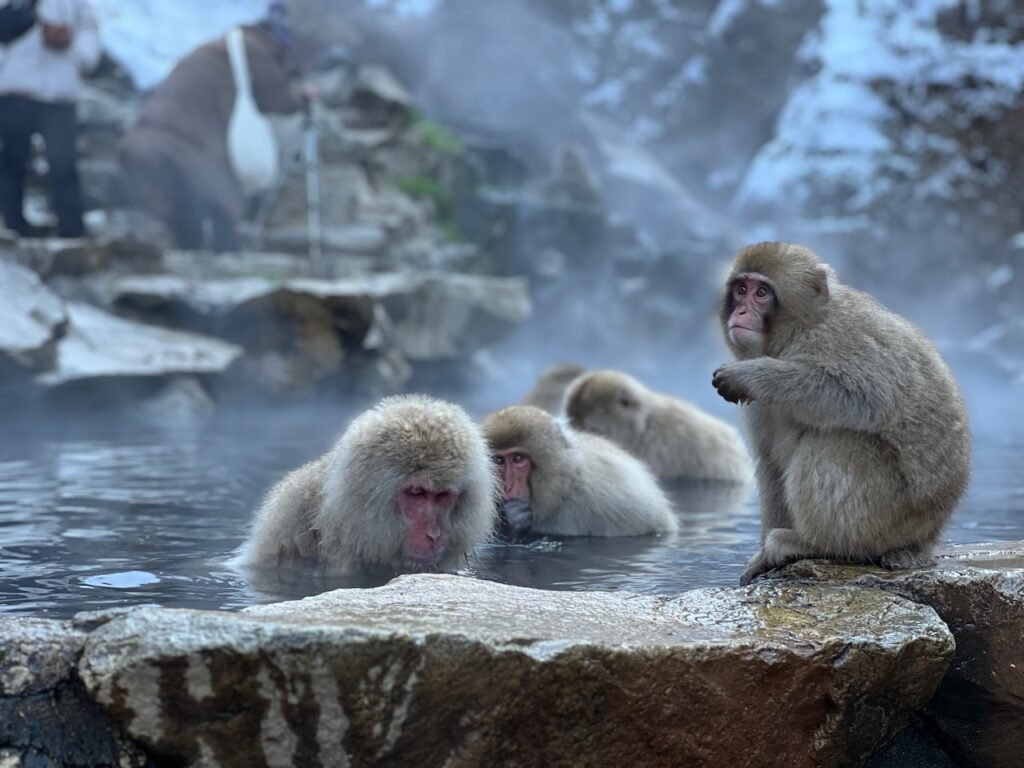
Arriving to the monkey onsen, or hot spring. The Jigokudani Wild Monkey Park got its name (which means “valley of hell” ) from the surrounding surreal landscape which includes amazingly steep cliffs, and flowing hot springs spewing steam.

A wise old man. This photo was taken from about a meter away. Regardless of the fact that they show no interest in visitors, they do not run away either, making for an interesting sense of distance yet closeness.

I’m soooo cold!!! 🥶 Where’s your mama?! We’ll hug you, little man! Females give birth every other year, one baby at a time, delivering it from midnight to dawn. The gestation period is about 180 days. One female has about ten babies in her entire life.
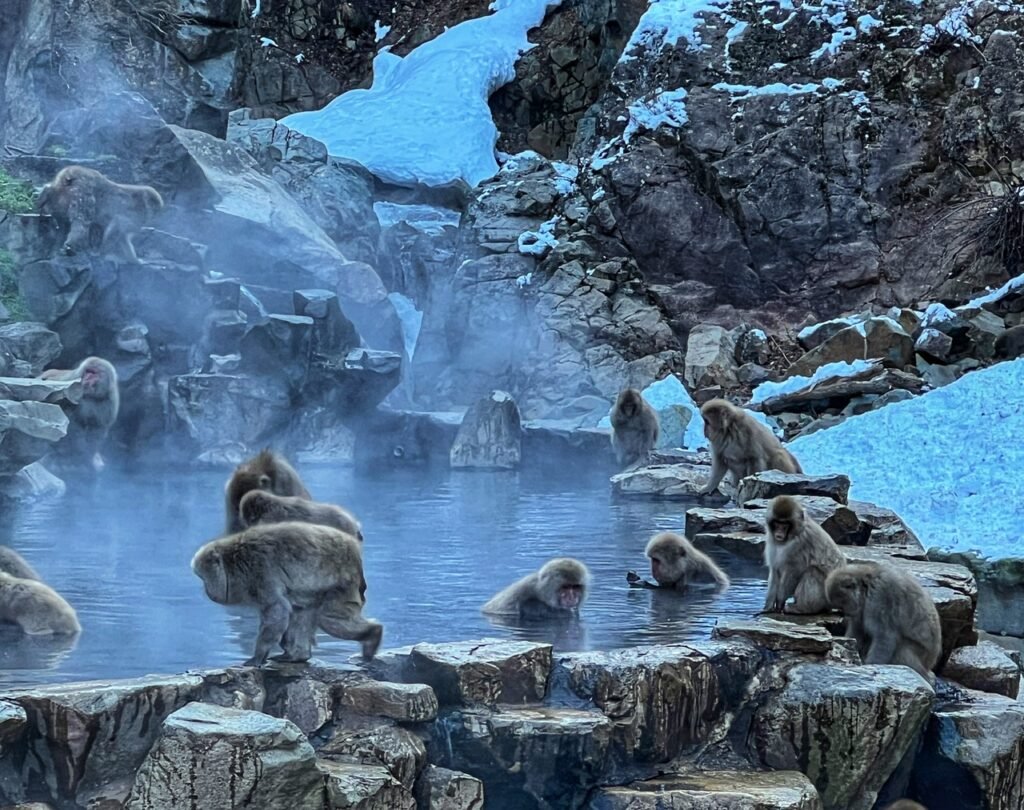

To enable observation of the monkeys in a near-natural environment, they are controlled by feeding instead of by fences. The habitat of the Japanese macaque stretches across Japan, covering mainly broad-leaved forest areas, except Hokkaido and the Okinawa area. They are the only monkeys living under cold weather extremes including up to ten degrees below zero.

But besides that, they act a lot like other monkeys, including us, which love being pampered, or picked over by their mothers, (or wives.)
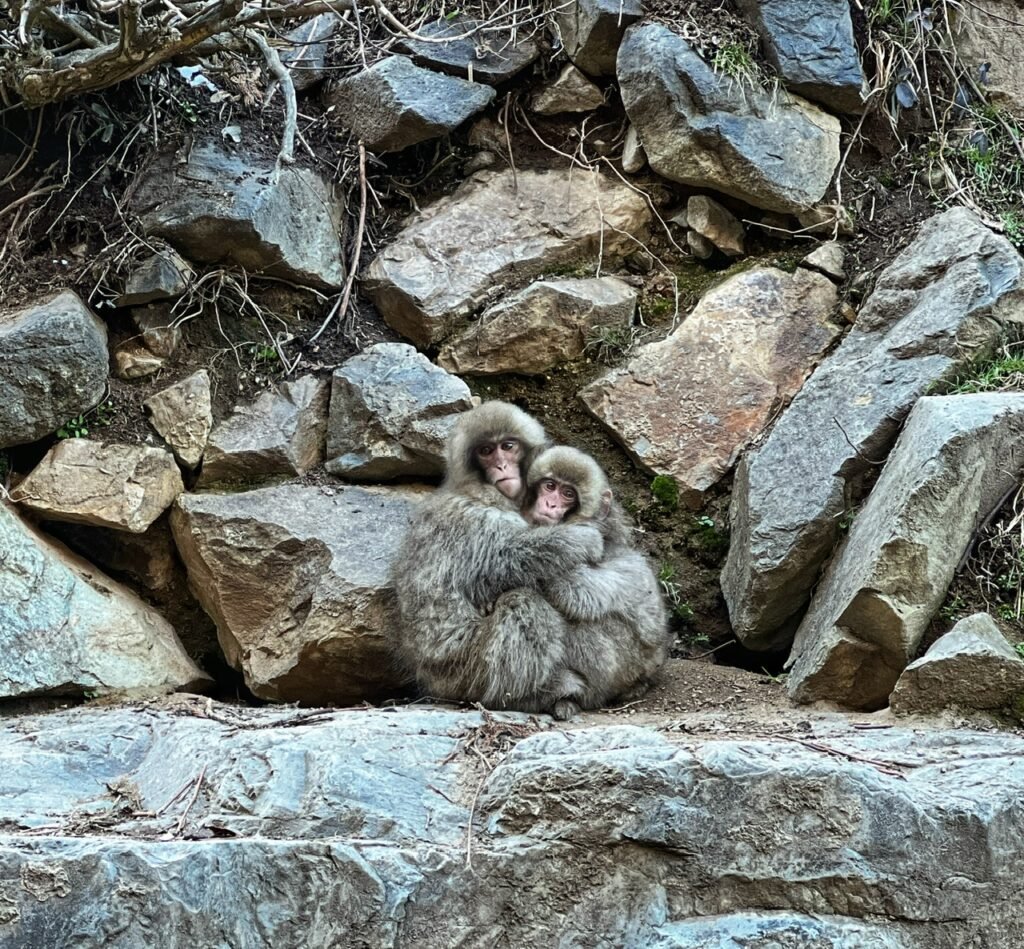
According to gift shop information, (where all this info came from), Japanese macaques lead a nomadic lifestyle. Like us, they start moving in the early morning and spend time foraging all day long. When night falls, they locate the nest of the day and go to sleep, repeating the same behavior the next day.
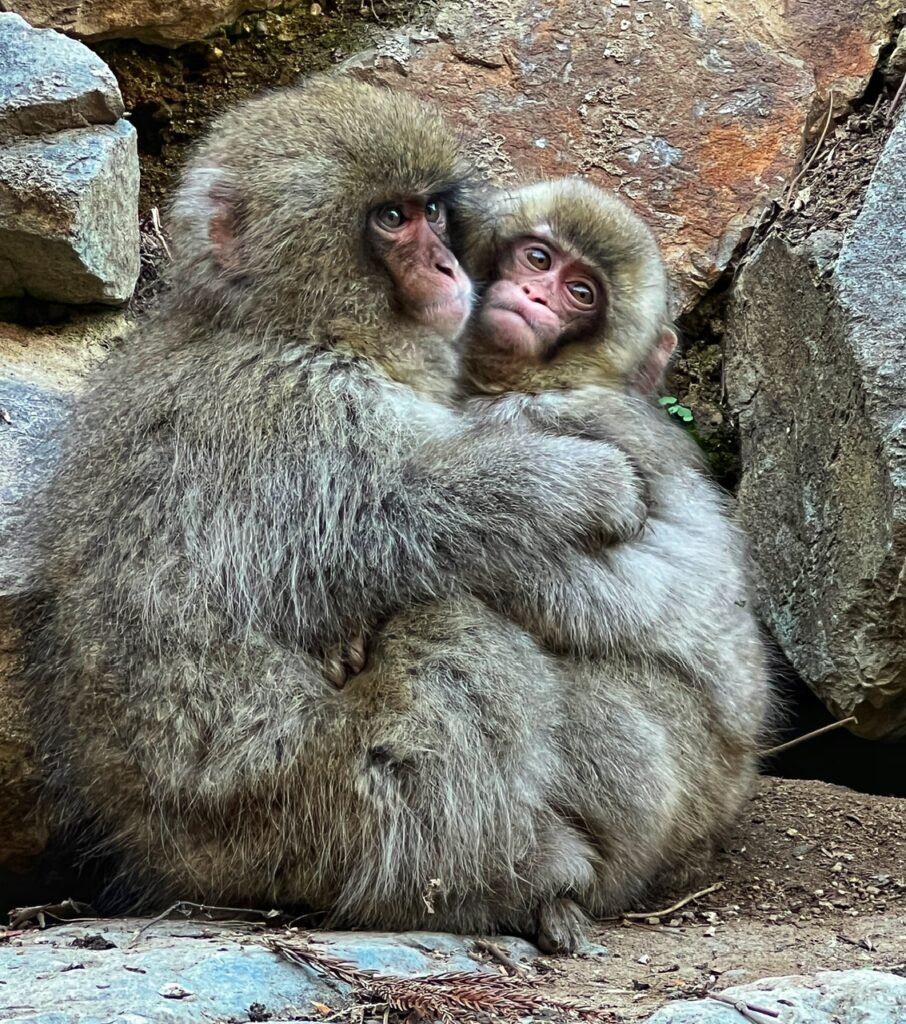

Like us, they’re also very happy to have a companion, and may feel a bit perplexed to have some time on their own.
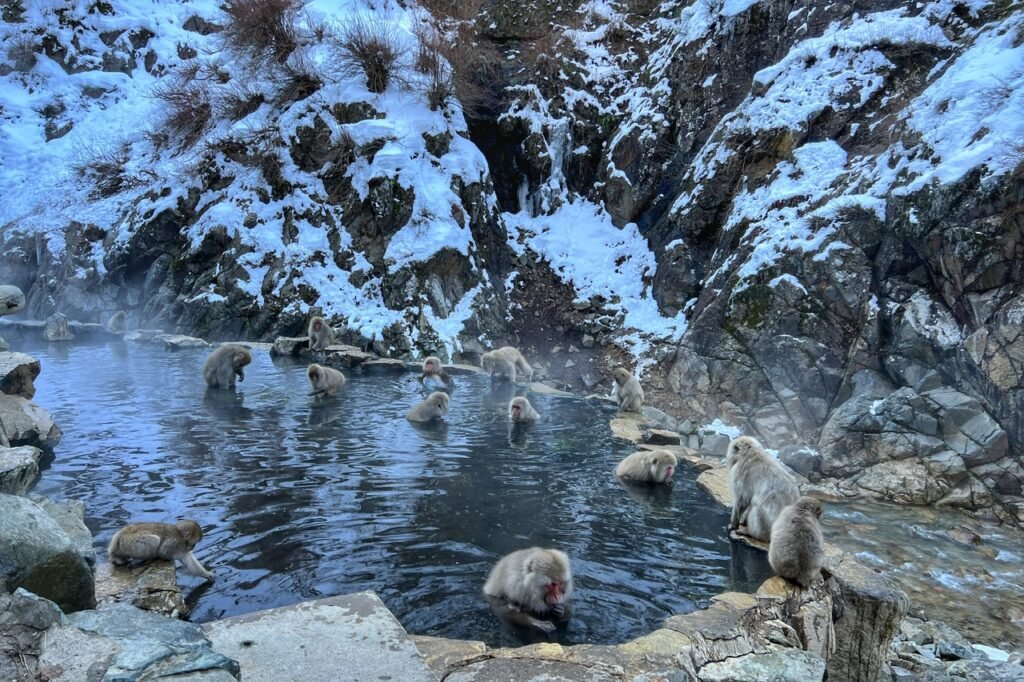
A troop of Japanese macaques consists of several adult males, adult females (two or three times the number of males) and their babies, for a total of five to thirty individuals, or in some cases more than 100 individuals.
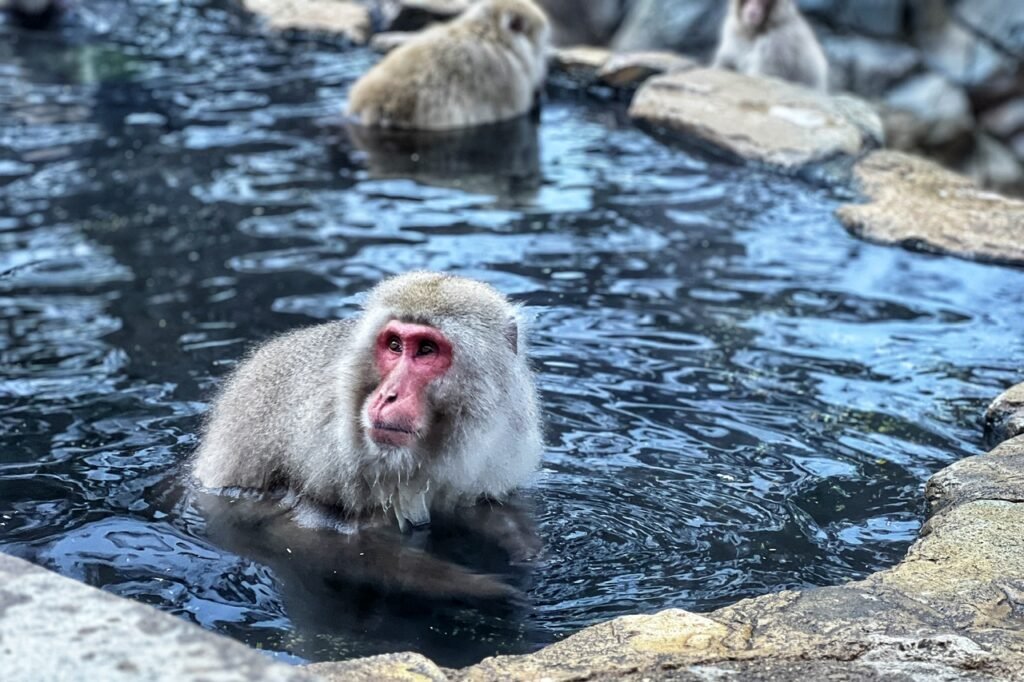
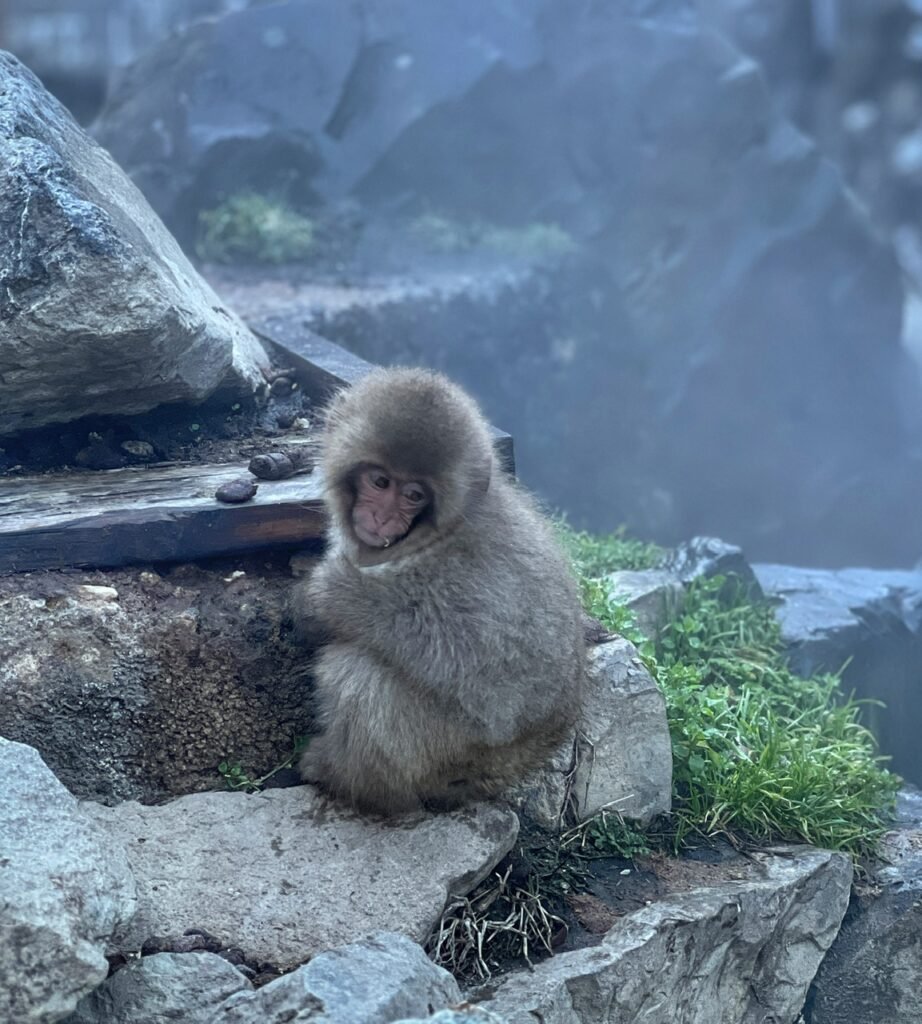
Most males move to another troop at a young age, and may belong to several different troops over the course of their lives. Strong bonds form between members, especially among females and their babies.
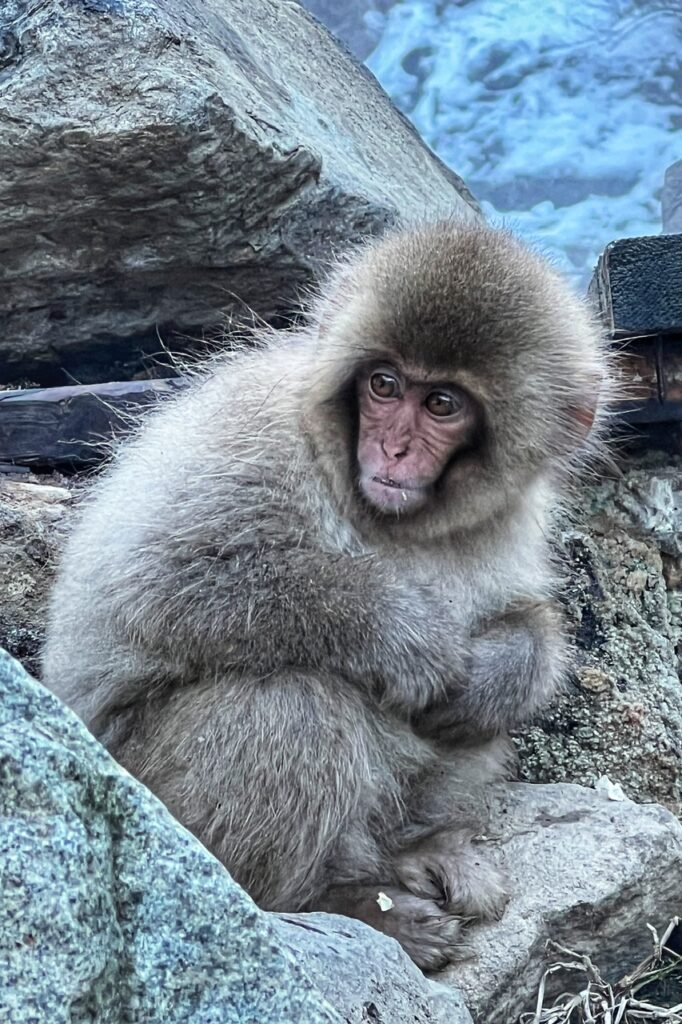
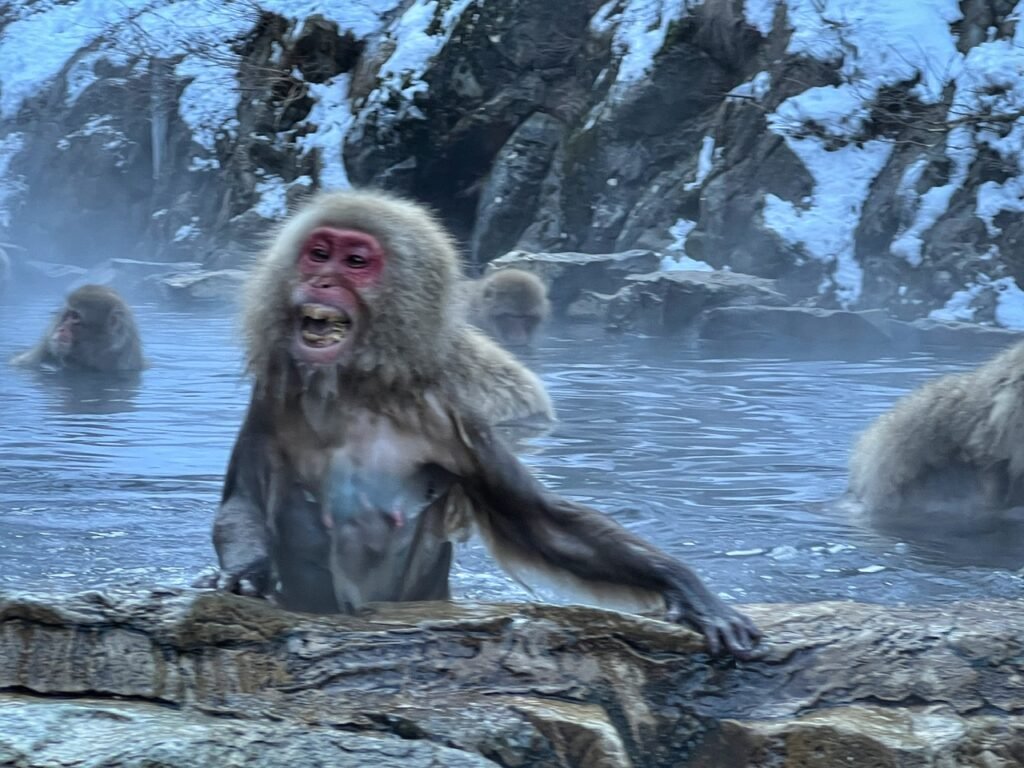
The monkeys in a troop are not submissive to any specific monkey. Instead, they trust and rely on each other. However, in their daily lives they are often involved in skirmishes, which we got to witness from this little asshole.


Naturally, there are stronger monkeys as well as weaker monkeys, and some are just greedy monkeys like this one, who was scooping all the grain off the bottom of the onsen and chowing down. That’s finger-licking grain!
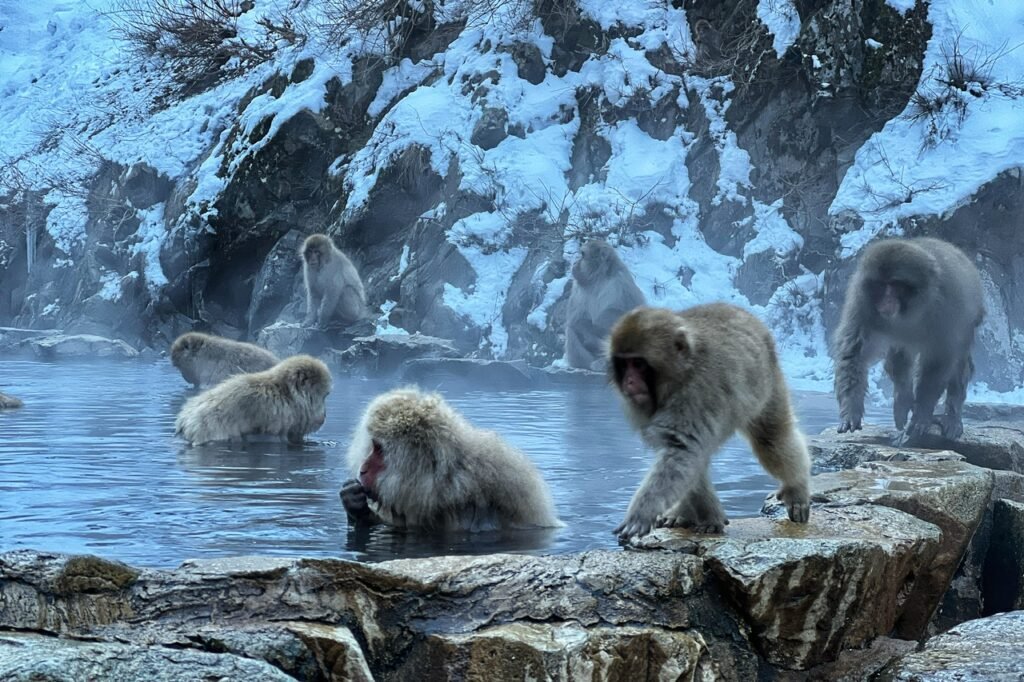
They were utterly fascinating to observe and if the crowds hadn’t started and we weren’t so cold, we could have easily done so all day.
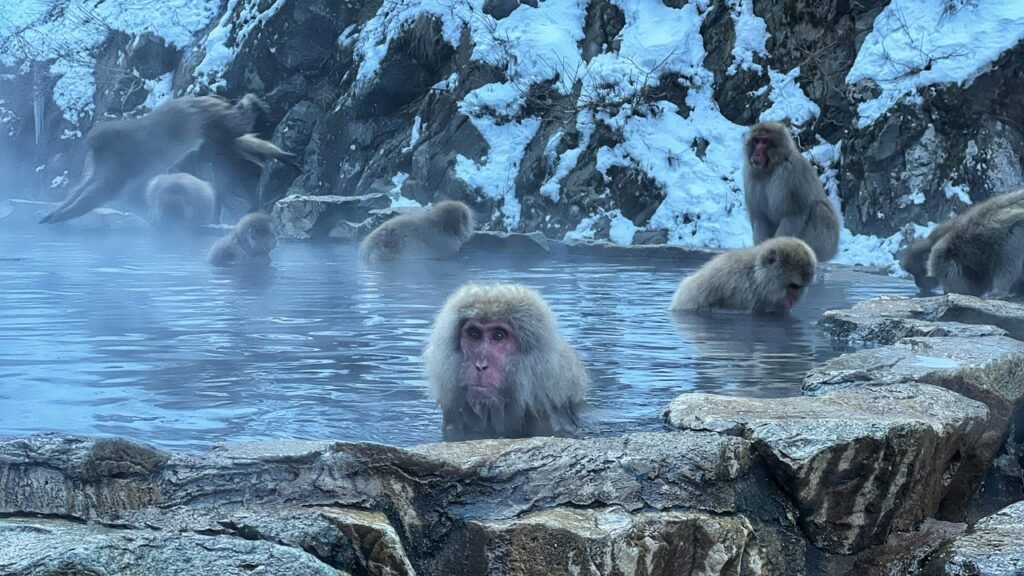
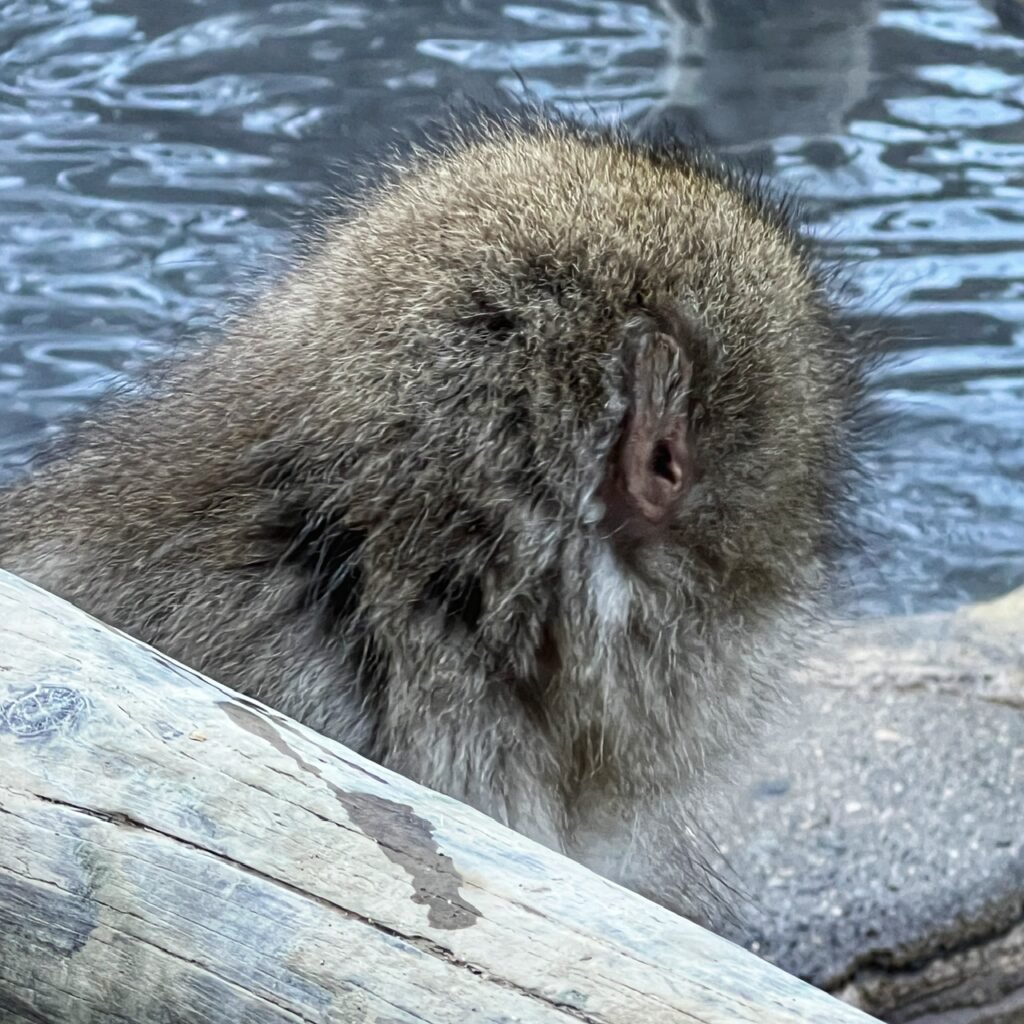
An old and wise man. The monkeys have a human-like facial structure with expressive eyes and brow lines. The ears, placed on both sides of the head, are so heavily covered in fur that they can hardly be seen.

Another distinguishing features of monkeys is their hands and feet. Their front feet (hands) have four fingers and a thumb, which is the same as in humans, enabling them to grip objects and pinch small things. Their feet also have opposable thumbs, which means they can perform the same tasks with their back feet as with their front feet, in a trait that differs from humans.
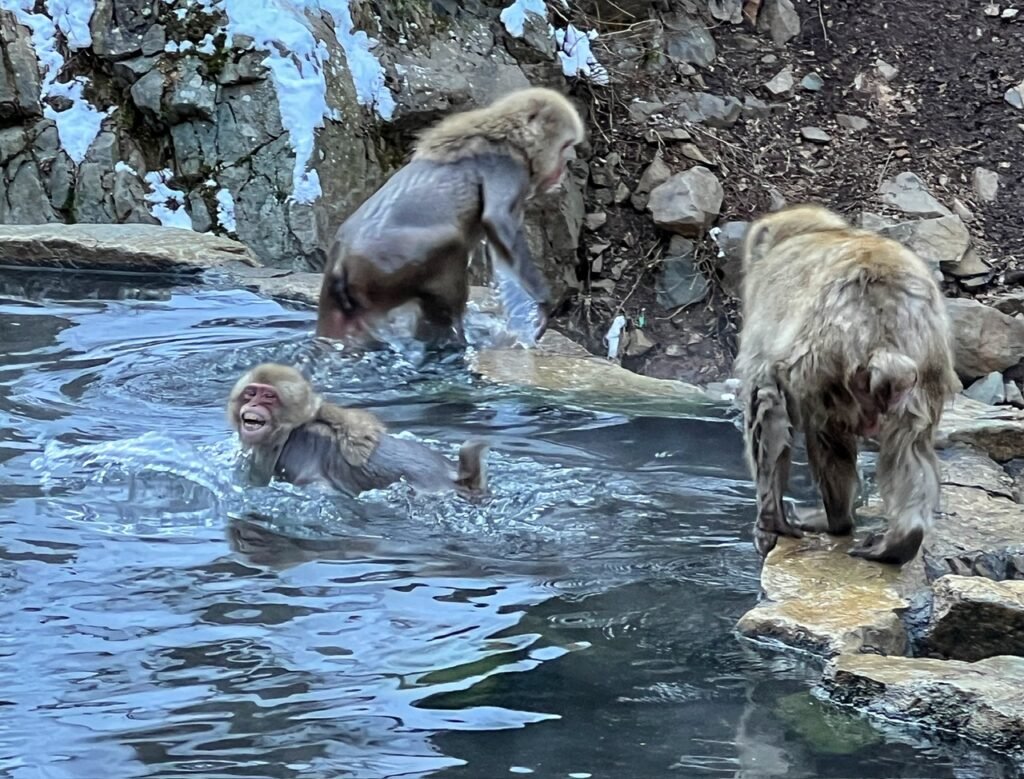
Another obnoxious bully sends his tub mates packin’
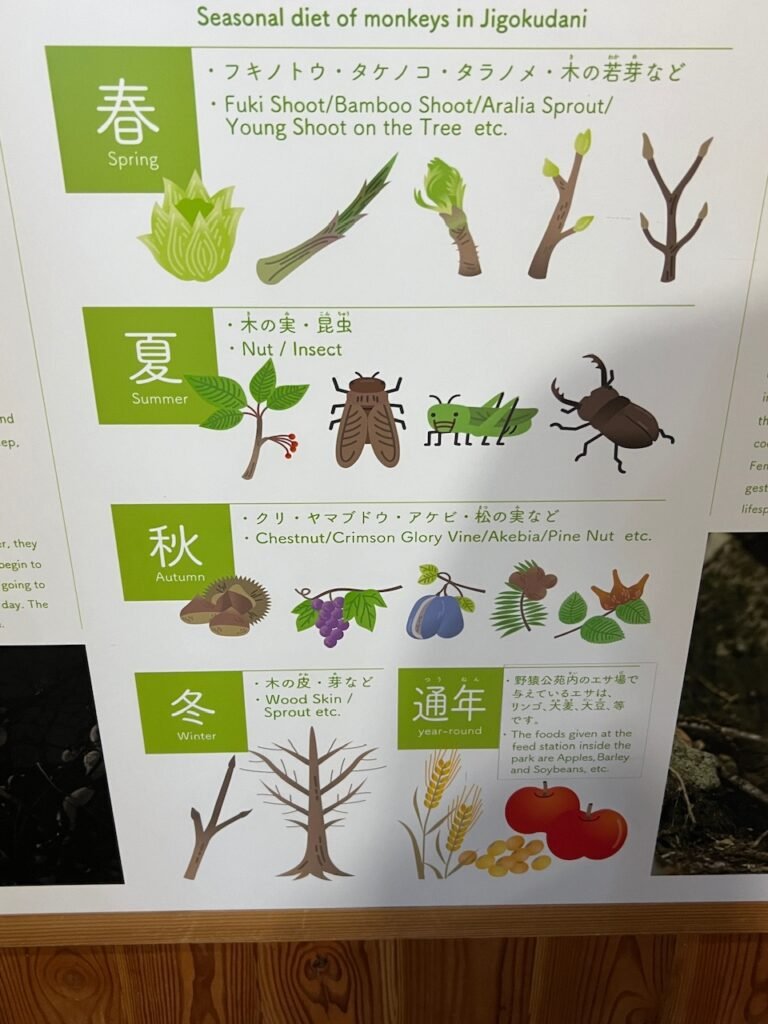

The standard monkey diet changes based on the season of course. Also, because we were there in winter, this pretty much guaranteed a sighting, as they are not fed year-round by the staff, although as soon as you cross into the park, you begin seeing them everywhere.
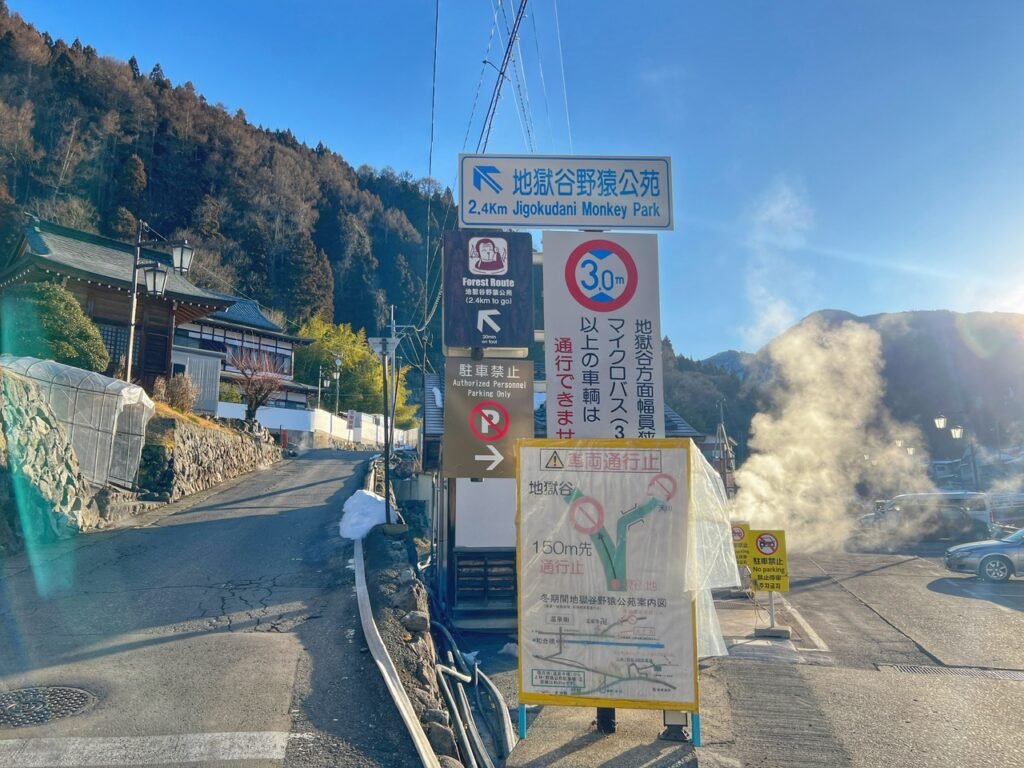
So…logistics…we took a very pleasant walk to the monkey park which took about an hour from the town of Yamanouchi, leaving 1.5 hours before the park opened at 9. On that frigid, yet perfectly blue-sky morning, there was steam emitting all over the village.
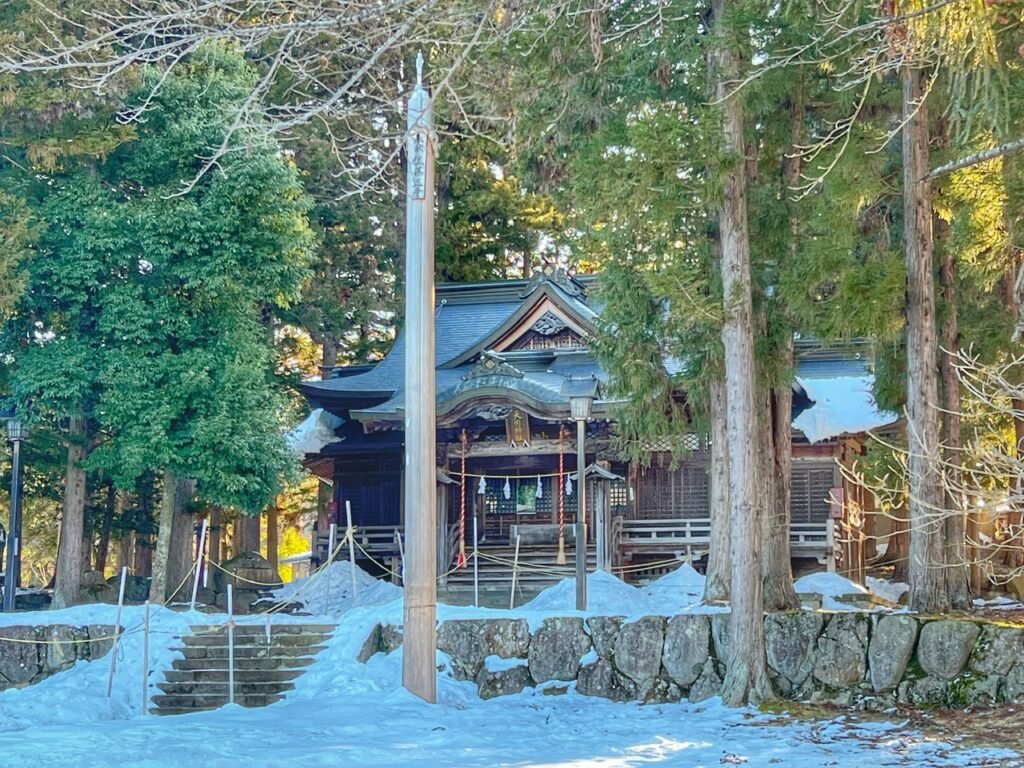
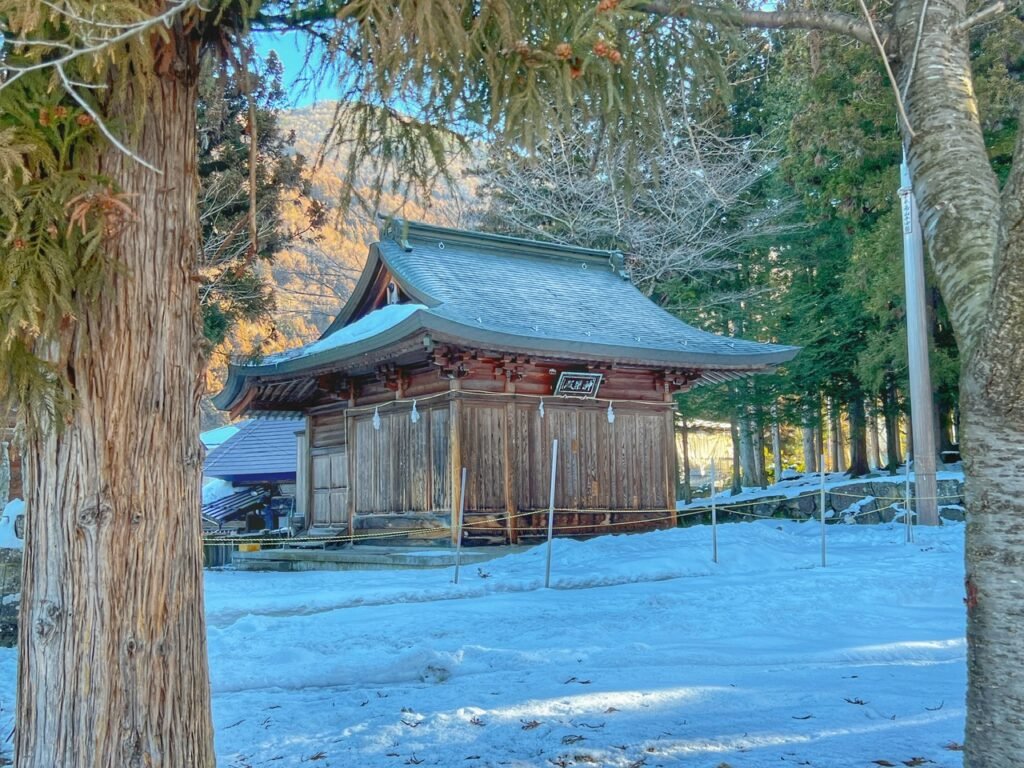
Winter wonderland in rural Japan. Now this is more our style. The tranquility was hypnotic after being in the city and immediately made us want more.

If you want, you can also take a bus from the town, but you still have to walk the last 30 minutes, or 1.6k to the park entrance, which had some tricky parts due to ice. This is also where it warns you to get rid of any food in your bag, although fortunately these guys were not like some of the monkey thievery we’ve grown accustomed to.

Additionally, there is a gift shop at the entrance where you can buy presents for yourself…or your partner’s monkey.

The trail to the park is absolutely lovely through thick wooded forest.

The fancy hotel and onsen located at the park which undoubtedly costs a pretty penny.


We, along with three speed-walking Brits and a German in camo with a long I’m-better-than-you lens, were the first to walk in the park at 9:00. The cost to get in was a very reasonable $5.33/each. (800 yen) By the time 10:00 rolled around, the tour buses had arrived en masse and we happily turned a heel to head back. So glad we got a little solo time with the monkeys beforehand!! Worth the walk in itself for sure, and undeniably an experience of a lifetime.
Hot Water

Choosing our one getaway from Tokyo was an absolute no-brainer for us. We needed peace, we needed mountains, we needed snow and we needed monkeys. Fortunately, Japan has a renowned place for all these things.
So, we hopped a very pricey bus, but still cheaper than the train, from Shinjuku Station and rode four hours west to the city of Nagano, home of the 1998 Winter Olympics. Another hour onward by train from there, we rolled into village of Yamanouchi at the end of the line.
Here we encountered our first Hopper FAIL when they didn’t have our reservation, costing us a lot of frustration and an unexpected $55, which eventually led to some cute Japanese costuming and a private onsen (thermal bath) to unwind in.

Yamanouchi is a luscious spa and hot springs town of about 12,000 people located amongst what is known as the Japanese Alps. The backdrop, needless to say, is stunning. The train ride to get out there also offered breathtaking scenery.

The Chase-sans playing dress-up


So, how did this whole plan come to be, you might ask? Well, we started the day in Tokyo at one of the bigger and more overwhelming bus/train stations called Shinjuku after buying our tickets online through an agency called Willer Express. The tickets cost a whopping $96 round trip for both tickets which is why this is our one and only trip outside of Tokyo. Had we taken the train, it would have been $240. No, we’re not in Latin America anymore folks.
When we got on the bus, we were interested to to see the buses weren’t as nice as LA either. However, they did have a nifty TV up front that looked like the DOS computer system booting up circa 1992 which showed the stops coming up on the route which was useful, and it also had the biggest and most sparkling clean bus bathroom in the back complete with folded over toilet paper just like they do at fancy hotels. They do do (pun intended) bathrooms well in Japan. But a big bummer, there was no heat on the seat. Oh no! What’s a traveler to do? 🤣

Speaking of bathrooms, at the Shinjuku station, this was the directions on entering and exiting the women’s bathroom. Is it possible they go a little overboard on rules and efficiency here? 😆
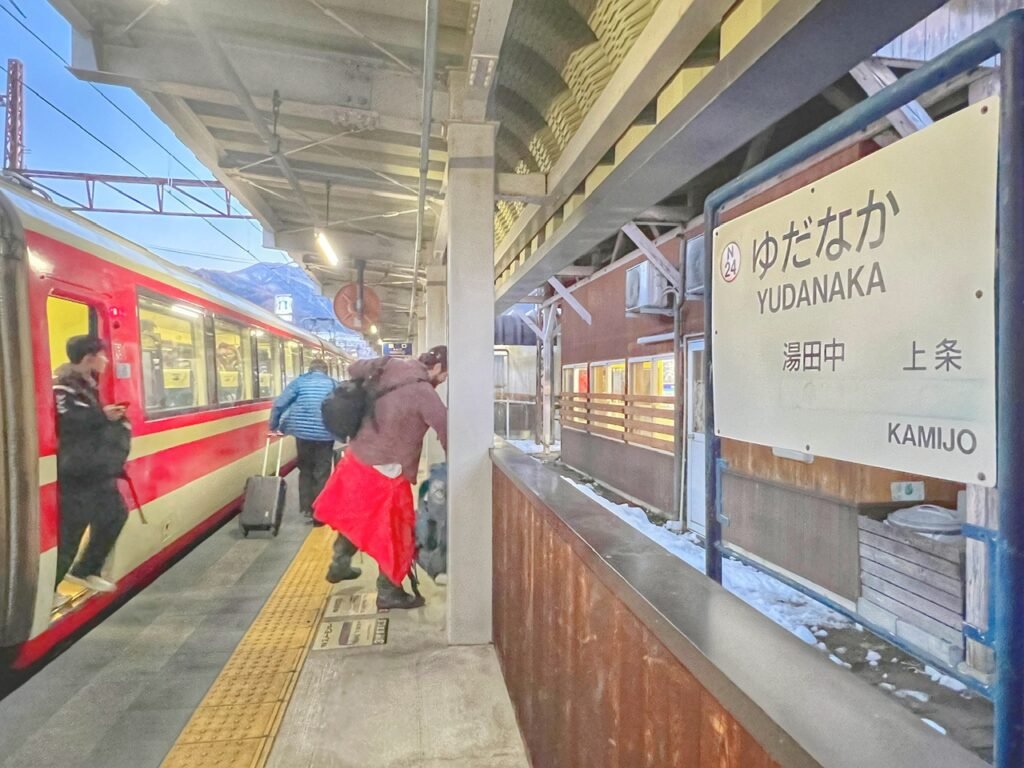
When we arrived to Nagano Station, we booked two tickets on the Nagano Dentetsu Line which leave about every half hour for Yamanouchi (or the Yudanaka Station.) The second journey cost $34 round trip, making the total side trip $130 in transportation costs.
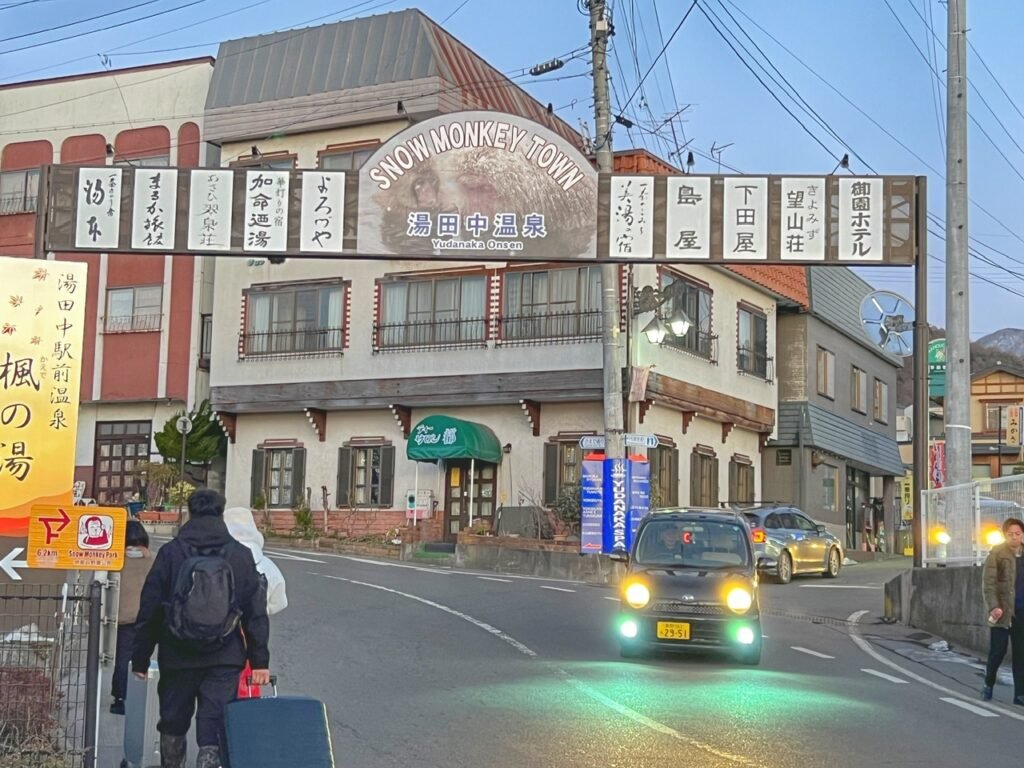
At last, at about 6 pm, we’d made it to Snow Monkey Town and could hardly wait to see the little guys.
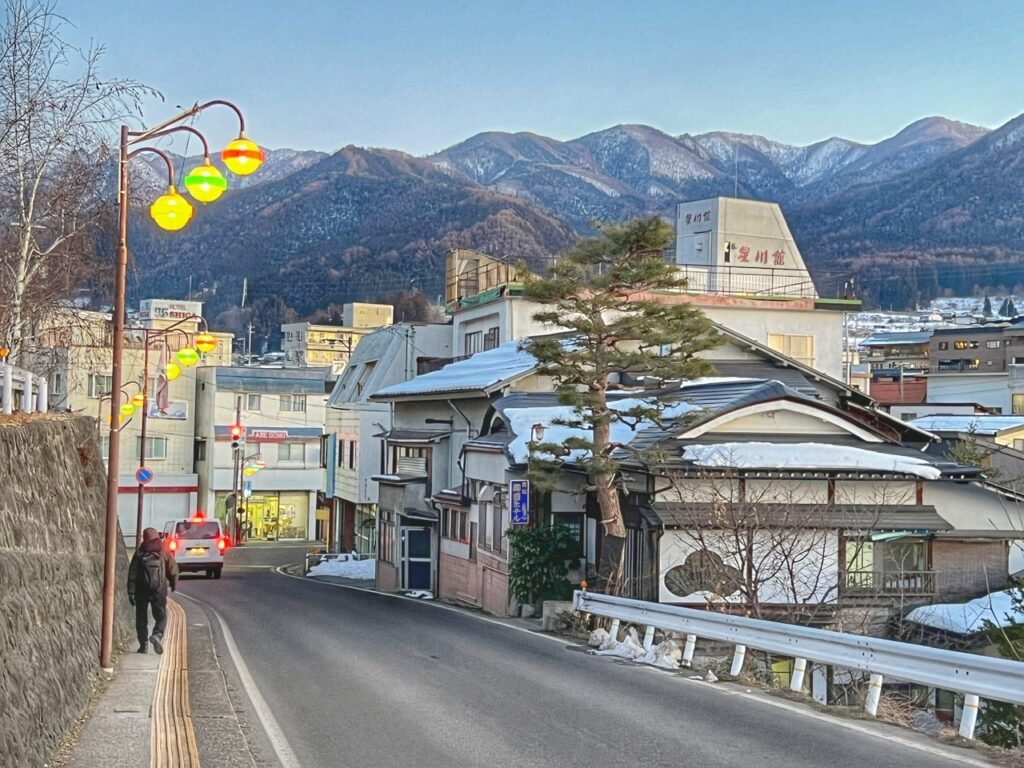

But first we had to walk 25 minutes through the charming and glowing streets…

…to our hotel at Shibu Onsen Kokuya , which we had booked through Hopper. If you’ve been following us awhile, you might know that we have been great fans of Hopper and gotten multiple discounts through their Carrot Cash and referral programs, including the night before at Almont Inn.


We kind of thought it might be too good to be true, and eventually it would fail and, as we were freezing, tired and hungry…this had to be the night. Shibu Onsen Kokuya had no record of our reservation whatsoever and claimed they would never have booked a room for $17, which is what we booked it for after a $50 credit we used. (So, $67 total.) After a nearly 45 minute agonizing phone call with Hopper’s phone center, clearly in India, they “graced” us with a $17 credit leaving us high and dry to pay the actual fee for the room which was originally around $200, clearly not in Mandy and Greg’s budget. Fortunately, Shibu Onsen Kokuya, who said they had no relationship with Hopper, worked with us and although we couldn’t afford their rooms, they put us in their sister property at Shibu Onsen Kadoya for $73/night so we were still out $55 and very very pissed off at Hopper who claimed it was all the hotel’s fault. Clearly something sketchy was going on and the guy on the phone was a jerk about it. At the time, the verdict was out on whether or not we’ll ever use them again. But, after three successful times in Taiwan following Japan, we’d probably try. 😬
The other property was very interesting. It was a completely self check in process to stay in a traditional Japanese ryokan inn. At a ryokan, all guests must take off their shoes when they enter the door and place them in supplied shoe lockers before putting on their slippers.
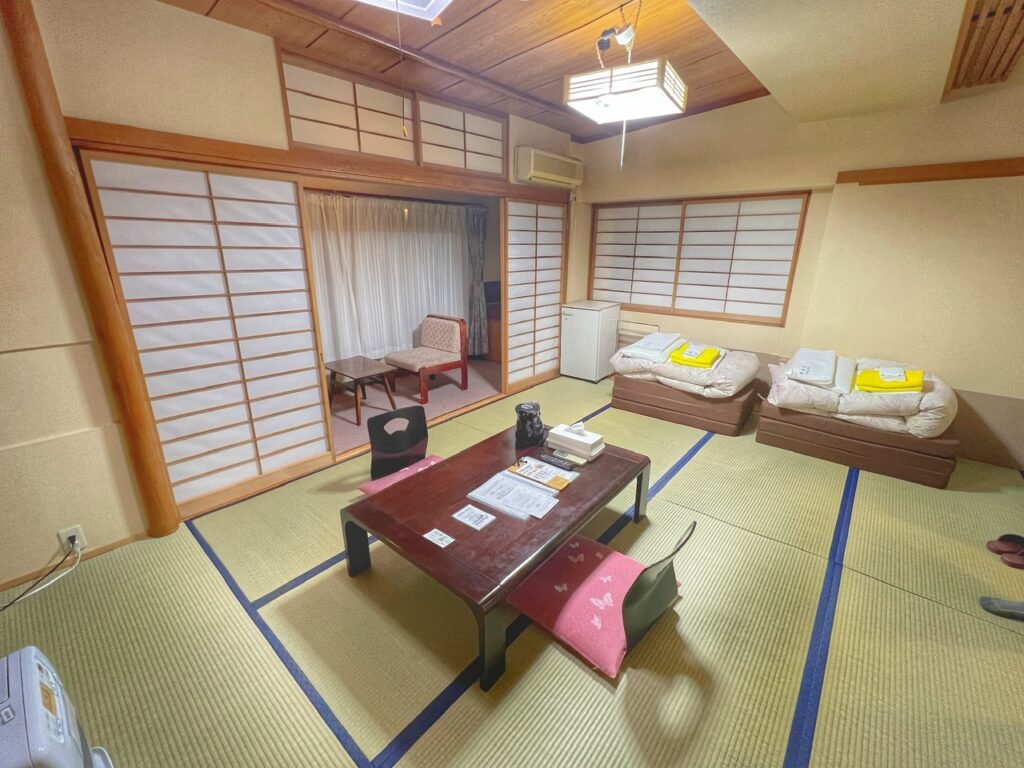
Then, we went to our room which had traditional tatami mats on the floor, rice paper room dividers, floor futons and duvets and little floor chairs parked under a table with an obligatory tea kettle on top, as well as a fridge.
Ryokans were set up in the Edo period (1603-1868) for lords and samurai warriors on the road. After a long day of travelling, the esteemed guests would bathe, enjoy a tea ceremony and have a long meal, washed down with plenty of sake.

We didn’t have any sake that night, but were certainly grouchy for a meal so we found a nearby restaurant open serving a simple meal of soba noodles, which tasted perfect in the cold, mountain climate. ($13/two bowls, including tea.)

And then, feeling fed and more relaxed, we had a lovely evening stroll and peered at the super fancy ryokans. Wow! Stay at these if you’ve got the extra cash!

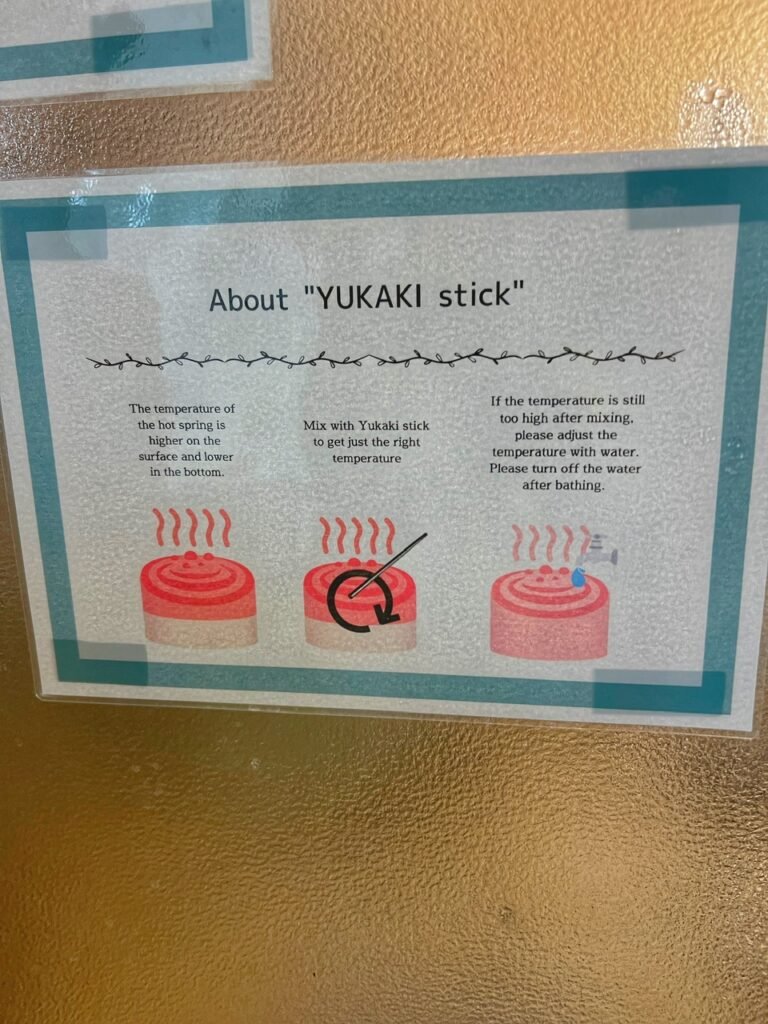
It was then that we suited up in our provided Yukata robes at the hotel, and headed down to our private bath where, of course in true Japanese style, you must read all the policies and procedures first.


But, when we entered our cave-like, steamy private spa for two, all our annoyances and frustrations from the evening vanished and the $55 seemed like a very worthwhile splurge. This looks fake, but it’s actually not. There were three pools within the pool of varying temperatures.
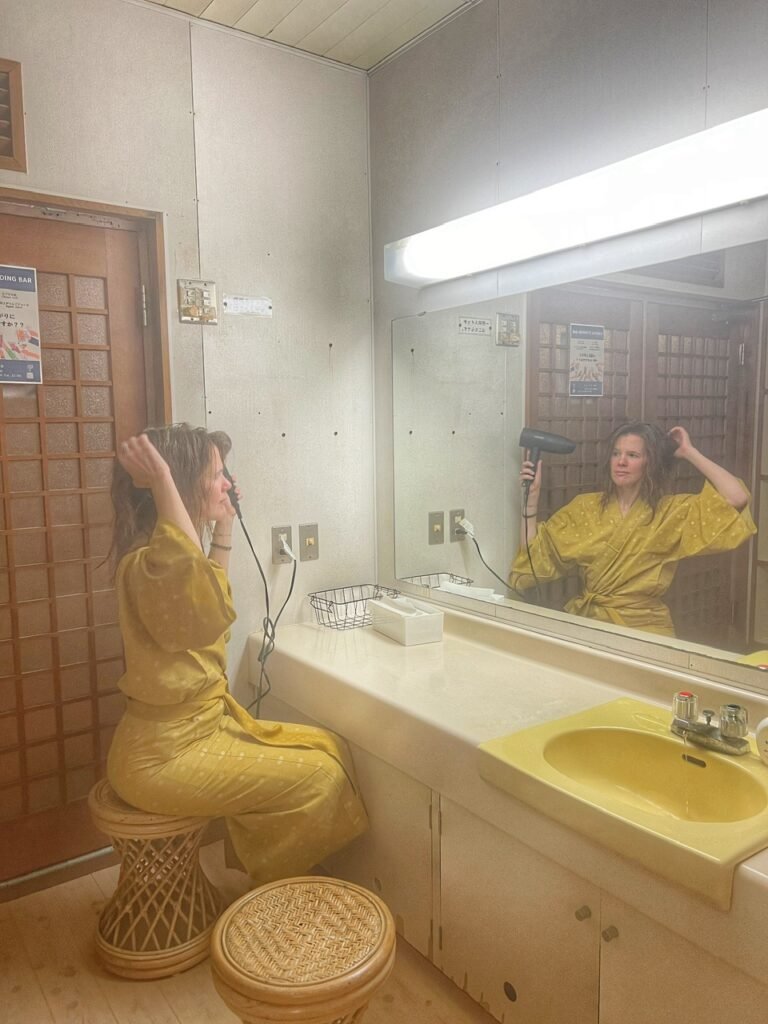
Mandy’s private hair drying room. All the amenities were also provided including towels, slippers, shampoo/conditioner, etc. And this was a “cheap” ryokan so we can only imagine what the fancy ones would be like!! This said, in the end, we’d undoubtedly recommend staying in a ryokan in Japan.

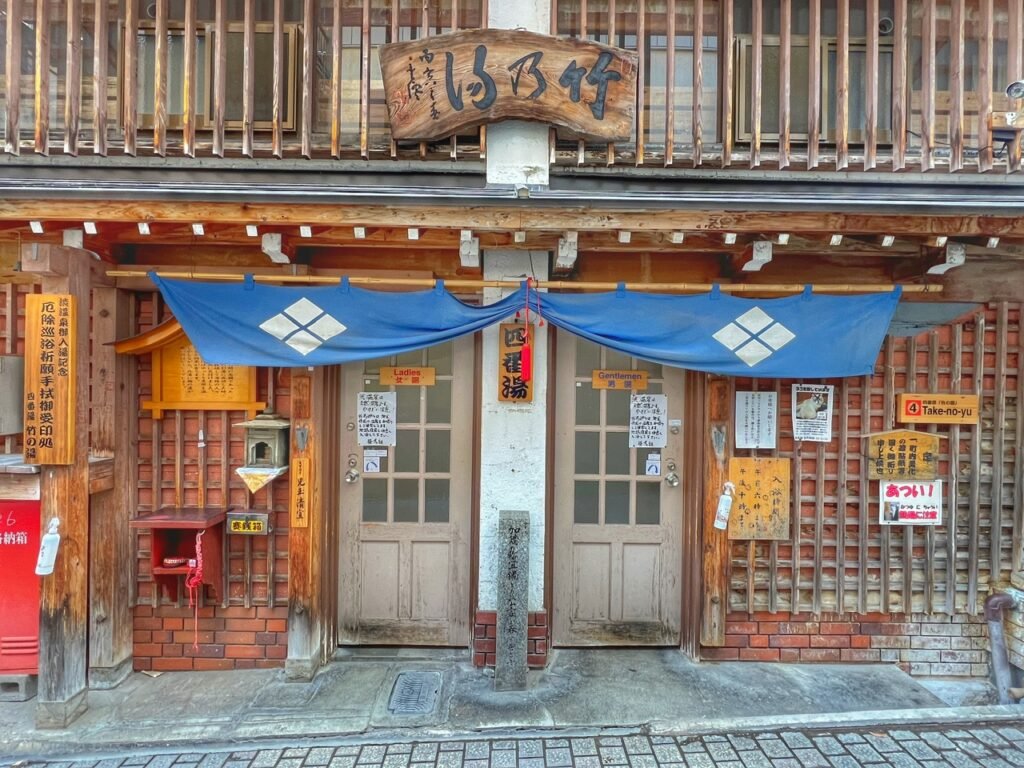
They also provided a very cute walking map of the village. For the record, with our stay, we also had the option to use the public onsens in the village as well at no additional cost. These are separated by women and men. We wanted to have both experiences but simply didn’t have time.

If you choose to use the public baths, you should note you get to clop along the cobblestone streets in these adorable wooden sandals and your yukata robe. It makes quite a satisfying sound and we loved witnessing others doing it.

The next morning, after the main monkey event, we walked around the village and caught some incredible views before catching our train.


We saw lots of statues with beanies on, which we didn’t understand, and admired their cheeky monkey sewer drain covers.


We even bought some soft boiled eggs on the side of the street, which were literally boiled by the geothermal gases that ooze from the earth everywhere in Yamanouchi. We haven’t had many SOFT boiled eggs because in the States we like them hard, but they are interesting. More creamy and satisfying actually. And look at that bright orange yolk!
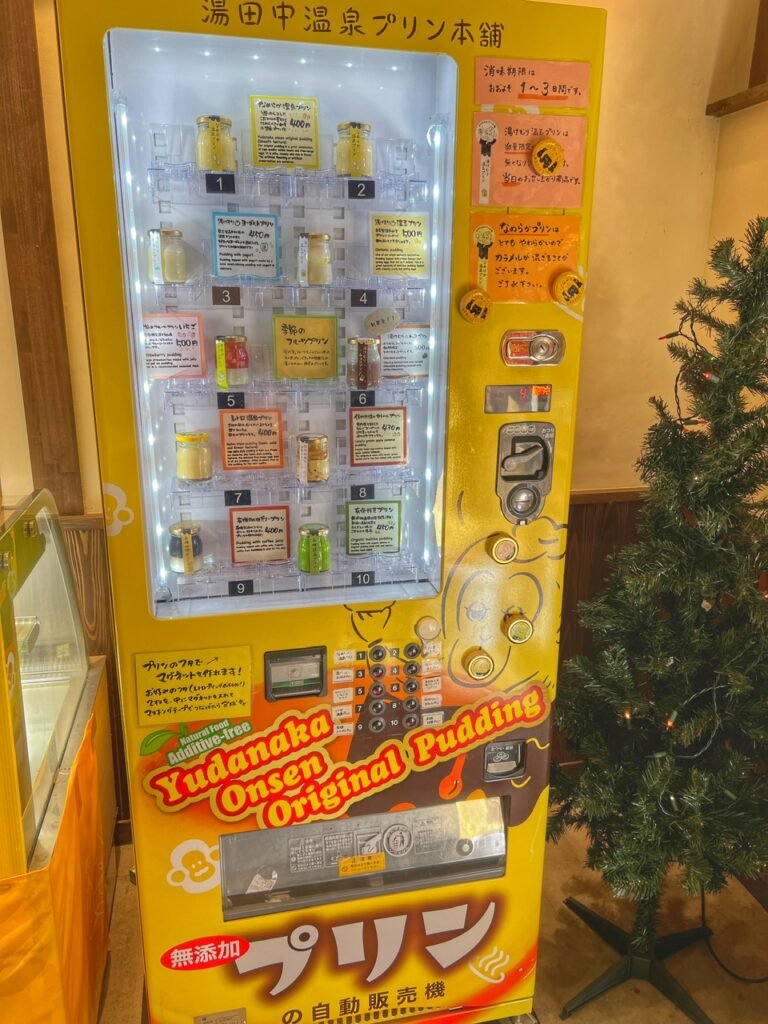
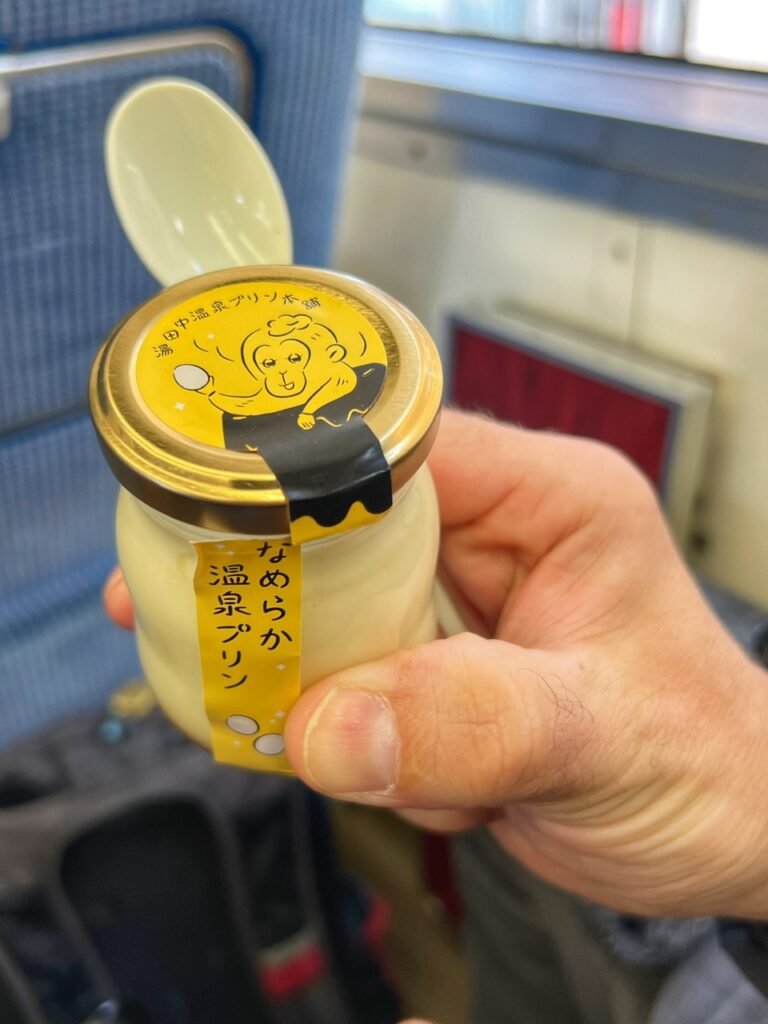
We also bought some original Onsen pudding out of a vending machine, which was also super creamy and delicious, although a bit pricey for the size at $2.20.
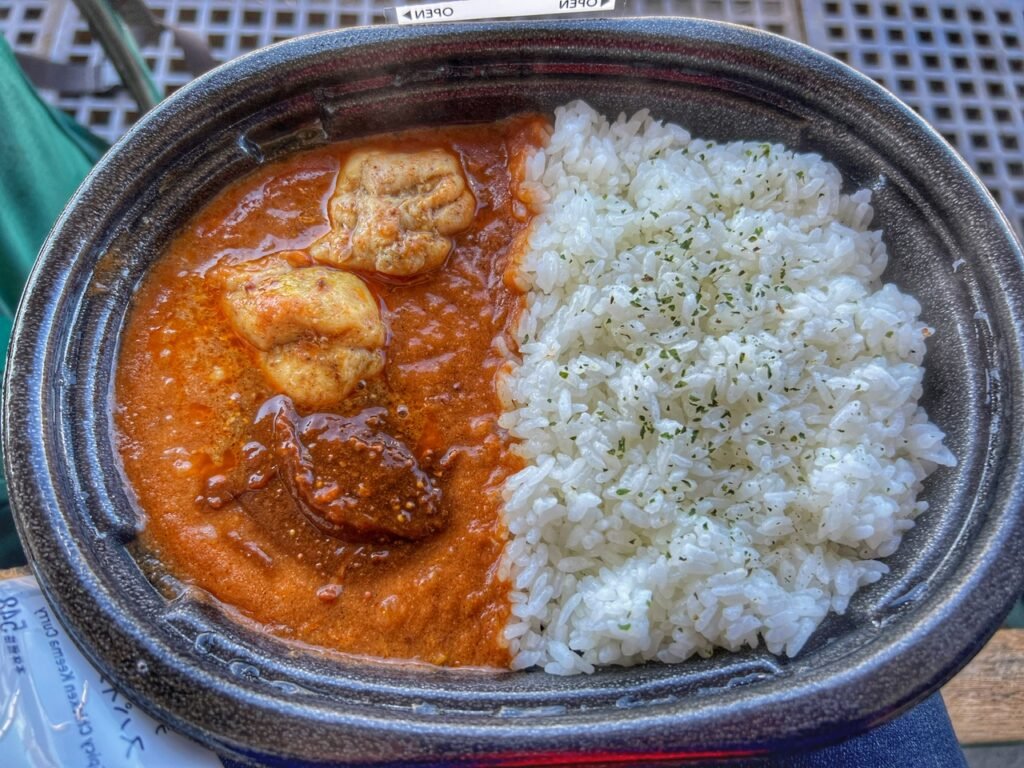
And for lunch? Lawnsons (convenience store) to the rescue again! This time, chicken curry for about $3.50 which we ate sitting at a bench on the side of the bus station.

Arriving back to Shinjuku, we encountered a vending machine selling cheesecake for almost $9 a slice! Wow! And we thought the pudding was expensive. 🤣🤣🤣


